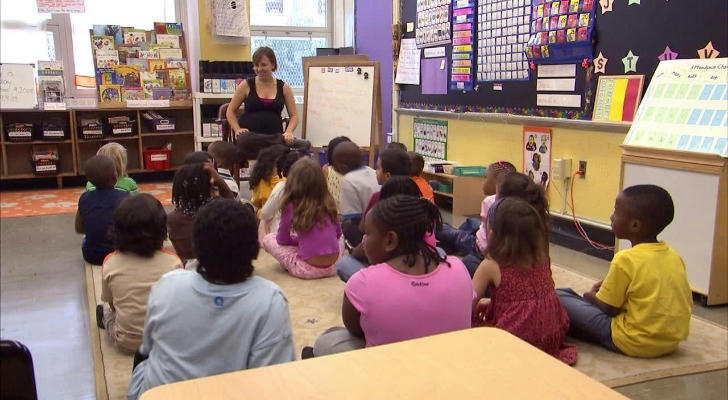Government support: How can non-education graduates obtain teacher certification-alternative teacher certification programs (ACPs)
If you have a non-education degree but want to become a certified teacher in the U.S., there are multiple government-supported pathways to help you achieve this goal. The U.S. offers alternative teacher certification programs (ACPs), financial aid, scholarships, and grants for individuals who did not major in education but wish to transition into teaching.
At the end of the article, there are the best ways for people over 50 to become teachers.

1. Enroll in an Alternative Certification Program (ACP)
Since you did not major in education, you will need to complete a state-approved alternative certification program. These programs allow non-education graduates to become licensed teachers without completing a traditional four-year education degree.
Types of Alternative Certification Programs
🔹 University-Based ACPs – Many universities offer post-baccalaureate or master’s degree programs in education that lead to teacher certification. Some programs also allow you to teach while completing coursework.
🔹 State-Approved ACPs – Many states offer fast-track certification programs that allow you to start teaching immediately with a provisional license while finishing your training. Examples include:
• Texas Teachers of Tomorrow (for Texas residents)
• New York Transitional B Certification (for career changers)
• California Intern Credential Programs (for working professionals)
🔹 Teaching Fellowships & Residency Programs – Some states offer paid teacher residency programs where you work as a teacher under the supervision of a mentor. Examples include:
• NYC Teaching Fellows
• Chicago Teaching Residency
• TNTP Teaching Fellows
🔹 Teach for America (TFA) – A government-supported program that places individuals from non-education backgrounds into high-need schools for at least two years while they complete certification.
📌 Tip: Each state has different ACPs and requirements, so visit your state’s Department of Education website to find programs that fit your needs.
2. Apply for Government Financial Aid & Grants
Since alternative certification programs can be costly, the U.S. government provides financial aid and grants to help cover tuition and program fees.
Federal Financial Aid
💰 FAFSA (Application for Federal Student Aid)
• If you enroll in a post-baccalaureate teacher certification program or an education master’s program, you can apply for federal loans, work-study, and grants.
• Submit your FAFSA application at studentaid.gov.
Federal & State Teaching Grants
🎓 TEACH Grant – Provides up to $4,000 per year for students pursuing teacher certification in high-need subjects (math, science, special education, ESL, etc.). In exchange, you must teach in a low-income school for at least four years.
🎓 Pell Grants – If you qualify based on income, you may receive up to $7,395 per year to cover coursework.
🎓 State Teaching Incentives – Many states offer loan forgiveness and scholarships for future teachers. Examples include:
• New York's Math & Science Teaching Incentive Program
• California Assumption Program of Loans for Education (APLE)
Loan Forgiveness for Teachers
If you already have student loans, you can apply for loan forgiveness programs after teaching for a certain period.
💵 Public Service Loan Forgiveness (PSLF) – Forgives remaining student loan balances after 10 years of service in a public school.
💵 Teacher Loan Forgiveness Program – Forgives up to $17,500 in student loans for teachers who work in high-need schools for at least five years.
📌 Tip: Apply for financial aid early, as funds are limited!
3. Pass Required Teacher Certification Exams
To become a certified teacher, most states require you to pass teacher certification exams that assess your subject knowledge and teaching skills. These exams vary by state but typically include:
📌 Praxis Core & Praxis Subject Assessments (Used in many states)
📌 State-Specific Exams:
• New York: NYSTCE
• California: CBEST / CSET
• Texas: TExES
📌 edTPA (Teacher Performance Assessment) – Some states require a teaching portfolio assessment.
📌 Tip: Check your state's Department of Education website for the exact exam requirements.
4. Apply for a Temporary or Initial Teaching License
Once you have completed your ACP coursework and certification exams, you can apply for a temporary or initial teaching license from your state’s education department.
Types of Teaching Licenses
🏫 Temporary/Provisional License – Allows you to start teaching immediately while completing full certification requirements.
🏫 Initial Teaching License – The standard entry-level certification for new teachers.
🏫 Professional License – Issued after gaining experience (usually 3-5 years) and completing professional development.
Many states allow career changers to start teaching under a temporary or provisional license while finishing full certification requirements.
5. Age-Specific Pathways
Ages 22-30: Recent College Graduates
🔹 Best Pathway: Enroll in an ACP and begin teaching while completing coursework.
🔹 Pros: Fast-track into a teaching career with job stability and benefits.
Ages 30-50: Mid-Career Professionals
🔹 Best Pathway: Join a state-approved ACP that allows you to teach while getting certified. Many online and part-time options exist.
🔹 Pros: Teaching offers job security, pension benefits, and a fulfilling career transition.
Ages 50+: Retirees or Late-Career Professionals
🔹 Best Pathway: Consider substitute teaching, tutoring, or part-time ACP programs leading to full certification.
🔹 Pros: Teaching can be a rewarding second career with retirement benefits and a flexible schedule.
Conclusion: How to Get Government Support and Become a Certified Teacher
✅ Enroll in an Alternative Certification Program (ACP) – Choose a state-approved program that fits your needs.
✅ Apply for TEACH Grants, FAFSA, and state funding – Use government grants and scholarships to reduce tuition costs.
✅ Pass required certification exams – Take Praxis, state exams, or edTPA, depending on your location.
✅ Obtain a temporary or initial teaching license – This allows you to start teaching immediately.
✅ Complete classroom experience and upgrade to full certification – Gain experience and fulfill professional development requirements.
The demand for teachers is high, and many states are actively recruiting career changers into the profession. With government support and alternative certification pathways, you can transition into a rewarding teaching career even if you studied a different field.
